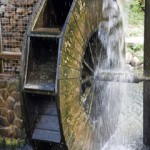
Hydro Power in the form of small run-of-river hydro power plants or large dams and reservoirs for hydroelectric generation all use the kinetic energy of moving water as their power source. Hydropower in all its forms is a renewable energy source with hydroelectric generation powering millions of homes a businesses around the world. Water is the fuel of hydropower, but the effects of climate change on waterfall and rain patterns can also affect the capacity of the electrical energy produced
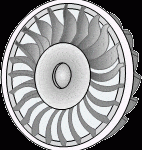
Impulse Turbines are bidirectional turbines used in hydro power and ocean power applications. Impulse turbines convert the kinetic energy of moving water, firstly into mechanical energy and secondly into electrical energy using an electrical generator. Impulse turbines use buckets or paddles plus one or more water jets directed at these buckets as they rotate. The water flows over the turbine blades at atmospheric pressure so is generally suited for high head, low flow applications.

Hydrokinetic energy uses turbines placed directly in river, ocean, or tidal currents to generate electrical power. The amount of hydrokinetic power available depends on the speed of the moving water in the form of a current within the river or ocean. Hydrokinetic energy devices are ideally installed at various locations around the world which have relatively steady water flows throughout the year and are not affected by flooding, water turbulence, or long periods of low water levels. Tidal currents under the gravitational influence of the moon and sun change direction and velocity depending on the local geography with river and tidal current hydrokinetic energy devices being installed above and below the waterline
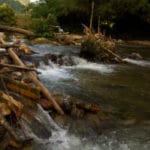
Low pressure micro hydro power scheme is another type of hydropower technology which uses low-pressure, low-head turbines to generate electricity without the need for dams or water impoundment. Micro hydro power is another renewable energy source with a low environmental impact and having several advantages over the use of fossil fuels as it is a non-polluting, renewable resource causing minimal environmental disruption to both the river and the native ecology.
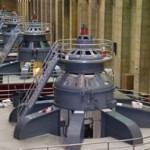
Hydroelectricity uses the force of falling water from large reservoirs or the flowing water of rivers, streams and waterfalls to generate electrical energy using water turbines. Hydroelectricity genetation schemes are common throughout the world and are a well established clean energy source with pumped hydro storage and run-of-river schemes used to generate electricity. Being a flexible, readily available and zero emissions source of renewable energy, hydro power will continue to play a vital role in our clean energy future
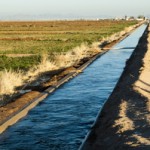
Penstocks are pipes, tunnels, canals or channels used to transport water from river to turbine. Penstock design is an important part of any hydropower scheme because without it, the turbine blades would not rotate. Hydro energy is a well known and used form of renewable energy resource that uses both the stored potential energy and the kinetic energy of water as a source of power. The correct design of a penstock for hydropower projects reduces its cost, improves water flow, and saves on waste water.

Pumped hydro storage uses the potential energy of stored water to generate electrical energy. Impoundment type hydroelectric power generating stations use dams and water reservoirs holding millions of gallons of water released through valves, sluice gates and pipes to drive rotate turbine blades. The mass flow of water from the dam or reservoir once released is allowed to flow away down the river until nature’s hydro-logic cycle in the form of rain or melting snow fill’s the dams reservoirs back up again. In pumped hydro storage systems, water is held between two ponds or reservoirs so that during periods of low electrical demand the water is pumped and stored in an upper reservoir or pond, but on demand is released to generate electrical energy and stored in a lower reservoir or pond

Turgo turbine designs are classed as impulse turbines that generates power from a high velocity jet of water. Turbine selection is a critical part of any small scale hydro scheme and there are plenty to choose from. Turgo turbines are well suited to low head run-of-river schemes which have large flow variations. As an impulse turbine, theTurgo design uses jets of water aimed at its runners to deliver the water pressure required for rotation. The efficiency of aTurgo turbine depends on the number of nozzle jets, runner design and effectiveness of water discharge

Hydroelectric power is a renewable source of energy using the gravitational flow of water. Water in motion from rivers, ponds, lakes and reservoirs can all be used to generate hydro power and natures weather ensures that the water cycle is a renewable resource. Hydroelectric power uses the kinetic energy of flowing water used to turn turbines and generators with the head height and pressure of the moving water determining the amount of electrical energy that is produced. Hydroelectric plants do not create air pollution or emissions as the fuel, the falling water, is not consumed but flows away downstream for use another day

Cross flow turbines are is the cheapest and easiest hydro turbine available and so are commonly used in small scale hydro schemes were reducing cost is important. One of the major disadvantages of practical cross flow turbines is their lower performance and efficiency compared to other hydro turbine designs such as Pelton and Francis turbines. The turbine is the major component of any hydropower scheme so improving its efficiency in terms of power extraction from the available head and flow of water as well as its cost is clear. Cross flow turbines use stationary nozzles which direct water onto a rotating runner so nozzle design and runner performance are key